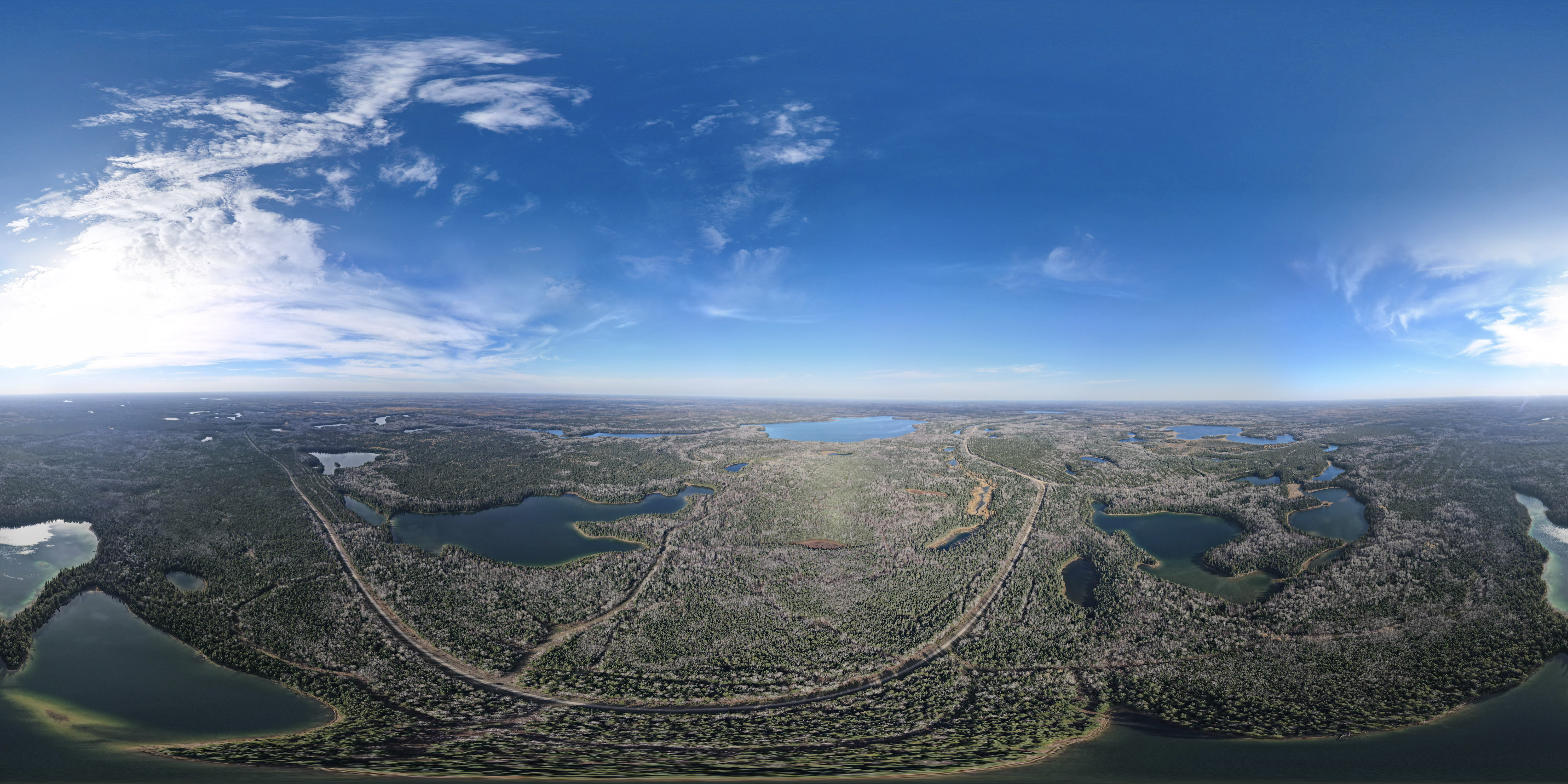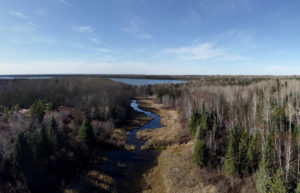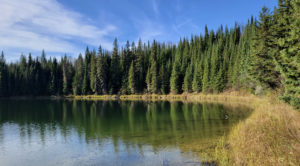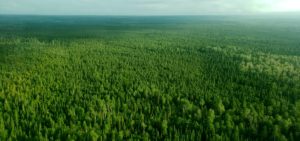Protecting Boreal Wildlands

Projects Sponsor
In 2022 the Nature Conservancy of Canada (NCC) launched the Boreal Wildlands project, the largest private conservation initiative ever undertaken in Canada, protecting 1,500 sq. km near Hearst, Ontario. The land provides refuge for many species, including threatened woodland caribou and harbours one hundred lakes and 1,300 km of waterways. Its forests and deep peatlands store the carbon equivalent to lifetime emissions from three million cars. Keeping the carbon in the ground allows NCC’s innovative Nature + Climate Accelerator unit to launch the organisation’s first forest carbon finance project in Ontario. Revenue from carbon credit sales will be used to accelerate conservation across Canada.
The Boreal Wildlands project’s scope, approach and innovation helps us see the forest for the future.

Aerial photo of Boreal Wildlands
A nature conservation project is never ‘done.’ Conserving and caring for resilient landscapes is a commitment that continues long after the acquisition of the lands are completed but the Boreal Wildlands story does have a happy beginning.
In 2022 the Nature Conservancy of Canada (NCC) launched the Boreal Wildlands project—the largest private conservation project ever undertaken in Canada. NCC’s goal with the Boreal Wetlands is to conserve through collaboration, and to do it quickly. The subject area, like so many others, is under intense and increasing pressure from many threats, including development and potential deforestation. That knowledge set the unprecedented pace for the project.
To get this vital deal done, NCC extensively researched the ecological values of the 1,500 square kilometre site near Hearst, Ontario. Everything, from the suite of species using the land, to the watersheds and river systems, the forest types and forest health, and historical records related to the incredible deep peatlands on the site were studied. The project area provides linkages to existing provincial parks, creating natural corridors and refugia for a variety of wide-ranging mammals including black bear, moose, wolf, lynx, and the nationally threatened woodland caribou.
Conserving this habitat also helps ensure that birds, including the Canada warbler, barn swallow, and olive-sided flycatcher will survive. The Boreal Wildlands project thus addresses two global interconnected crises, the impacts of climate change and rapid biodiversity loss.
The local economy was an important consideration for NCC. Potential economic impacts—both positive and negative—of a conservation project on the site were investigated and weighed. Local community members, industries, and community groups were consulted early on and throughout.
The project lands are in the heart of Treaty 9 territory. This area is home to many Indigenous communities and holds great cultural significance for Indigenous People who have stewarded these lands since time immemorial. NCC strives for lasting conservation outcomes that also honour Indigenous relationships with the land, including access for harvesting and a space for knowledge-sharing.

Example of one of Boreal Wildlands’ many lakes
NCC is working closely with a local Indigenous community and other local Indigenous interests toward the long-term management and stewardship of this site.
Before undertaking this conservation project, NCC reached out to many Indigenous communities in the Treaty 9 area seeking their input and feedback.
The result of all this research and consultation was a determination that the Boreal Wildlands was an ideal site for a large-scale community-driven conservation project and appropriate for a complementary conservation finance project. That’s the role NCC’s new Nature + Climate Project Accelerator group, which embraces innovation in the delivery of nature-based climate solutions, was born for.
The Nature + Climate Project Accelerator’s mission is to accelerate conservation outcomes by connecting the true value of nature to new sources of financing, principally through carbon offset projects.
A feasibility study to determine the carbon storage of the trees and peatlands, which in turn informed the various approaches by which carbon offsets can be generated, was carried out. NCC is now developing a voluntary carbon project at the Boreal Wildlands and using one of the world’s leading carbon standards. Moreover, the project will also be certified against a leading co-benefit standard, given the many co-benefits that conservation of these lands will provide; habitat protection, freshwater conservation, species at risk protection, connective ecological corridors, recreational opportunities are all there. NCC’s carbon feasibility study supports the adoption of these approaches which will ensure that this project ranks among the world’s leading conservation-based, forest carbon projects.
Getting all this done entailed a complex negotiation with Domtar Inc, a major forestry company, to secure these lands. Given the large number of competing bidders and international interest in this property, the deal is a testament both to the seller and NCC.

Boreal Wildlands with lush green habitat
NCC was then tasked with raising the $46M in total project costs required to complete the purchase of the project lands, and the vendor was agreeable to supporting that effort by way of a $7M reduction in purchase price of the property. Beyond the purchase price, there will be an endowment fund for the long-term stewardship of Boreal Wildlands, to ensure that these lands are cared for forever.
The land securement was completed in two phases, with the first phase closing in February 2022, and the second phase closing in August 2022. Extraordinarily, by the time NCC publicly released the fundraising campaign they were more than 70% to their goal of securing all project funds. The public launch generated significant national and international interest in the project (more than nine hundred media stories), and subsequent contributions to the project’s costs. By the time the second phase closed, the funding gap was almost gone, the result of an extraordinary response by donors over four and a half months.
The Boreal Wildlands project’s scope, approach and innovation helps us see the forest for the future.













